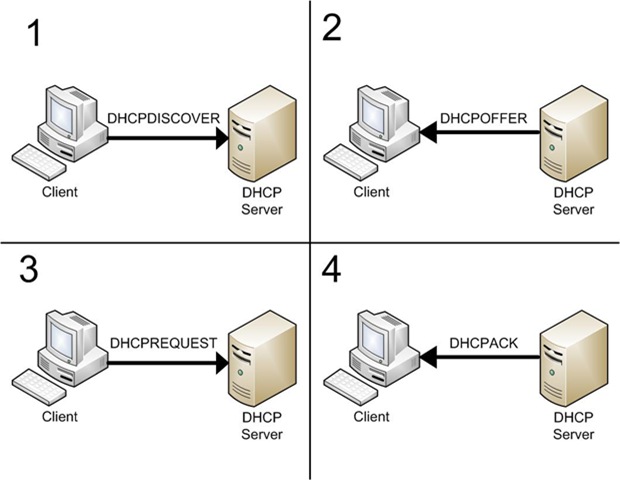DHCP Server – Core Interview Questions and Answers
 DHCP Server – Core Interview Questions and Answers
DHCP Server – Core Interview Questions and Answers
Define DHCP process.
DHCP Discovery:
The client broadcasts on the local physical subnet to find available servers. Network administrators can configure a local router to forward DHCP packets to a DHCP server on a different subnet. This client-implementation creates a UDP packet with the broadcast
destination of 255.255.255.255 or subnet broadcast address and also requests its last-known IP address (in the example below, 192.168.1.100) although the server may ignore this optional parameter….
When a DHCP server receives an IP lease request from a client, it extends an IP lease offer.
This is done by reserving an IP address for the client and broadcasting a DHCPOFFER message across the network. This message contains the client’s MAC address, followed by the IP address that the server is offering, the subnet mask, the lease duration, and the IP address of the DHCP server making the offer.
The server determines the configuration, based on the client’s hardware address as specified in the CHADDR field. Here the server, 192.168.1.1, specifies the IP address in the YIADDR field.
DHCP Requests:
Whenever a computer comes on line, it checks to see if it currently has an IP address leased. If it does not, it requests a lease from a DHCP server. Because the client computer does not know the address of a DHCP server, it uses 0.0.0.0 as its own IP address and 255.255.255.255 as the destination address. Doing so allows the client to broadcast a DHCPDISCOVER message
across the network. Such a message consists of the client computer’s Media Access Control (MAC) address (the hardware address built into the network card) and its NetBIOS name.
The client selects a configuration out of the DHCP “Offer” packets it has received and broadcasts it on the local subnet. Again, this client requests the 192.168.1.100 address that the server specified. In case the client has received multiple offers it specifies the server from which it has accepted the offer.
DHCP Acknowledgement:
When the DHCP server receives the DHCPREQUEST message from the client, it initiates the final phase of the configuration process. This acknowledgement phase involves sending a DHCPACK packet to the client. This packet includes the lease duration and any other configuration information that the client might have requested. At this point, the TCP/IP configuration process is complete.
The server acknowledges the request and sends the acknowledgement to the client. The system as a whole expects the client to configure its network interface with the supplied options.